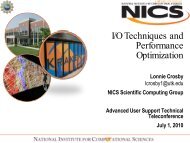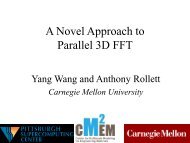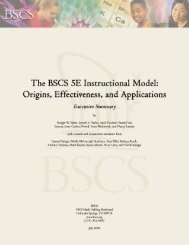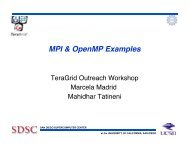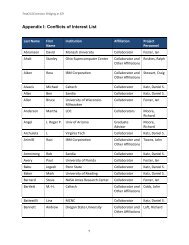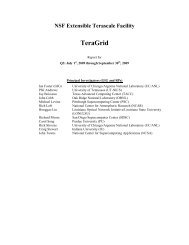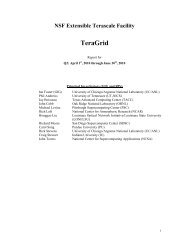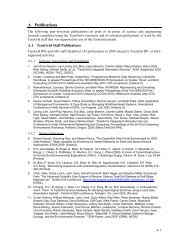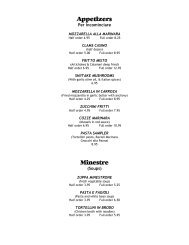TGQR 2010Q4 Report.pdf - Teragridforum.org
TGQR 2010Q4 Report.pdf - Teragridforum.org
TGQR 2010Q4 Report.pdf - Teragridforum.org
Create successful ePaper yourself
Turn your PDF publications into a flip-book with our unique Google optimized e-Paper software.
2.2.8<br />
Chemistry: Molecular Simulation of Adsorption Sites in Metal-Organic Frameworks (PI:<br />
Randall Snurr, Northwestern)<br />
Metal-<strong>org</strong>anic frameworks (MOFs) are a new class of nanoporous materials that could be<br />
designed for a variety of purposes. For example, nanoscale pores tailored to attract a crowd of<br />
hydrogen gas molecules, which normally like plenty of elbow room, might be one way to pack<br />
more fuel into the tank of a hydrogen-driven vehicle or a fuel cell-powered mobile phone. Snurr<br />
likens nanoporous materials in this case to a sponge, one self-assembled Tinker Toy fashion by<br />
miniscule metal linker pieces and <strong>org</strong>anic struts that join to form a 3-D structure laced with tiny<br />
channels. Snurr and colleagues simulate adsorption sites in MOFs to predict how the materials<br />
will perform.<br />
A focus in 2010 was trying to develop or screen porous<br />
materials for capturing CO2 from the exhaust gases of<br />
coal-fired power plants. Carbon capture and sequestration<br />
are widely viewed as a possible way to reduce CO2<br />
emissions. The idea is to separate the carbon dioxide out<br />
of flue gas from a coal-fired plant and then store the CO2<br />
far underground in geologic formations. Snurr’s group is<br />
modeling porous materials for their ability to separate<br />
CO2 from the other gases in the flue gas stream. They<br />
have developed a consistent molecular modeling method<br />
and validated it against experimental data for 14<br />
representative MOFs. With this validation, they are<br />
screening large numbers of existing and hypothetical<br />
MOFs.<br />
In addition, the materials might be designed for potential<br />
applications in catalysis, chemical separation and to<br />
reduce auto emissions, among other things. Such<br />
materials could lower the energy demands—and cost—of<br />
energy-intensive processes, such as distillation, making<br />
them “greener.” The materials could be useful in chiral<br />
chemistry applications as well, for instance separating<br />
active and inactive forms of molecules for use in drugs.<br />
The researchers employ Monte Carlo simulations to<br />
understand the materials and their properties, such as the<br />
amount of molecules they adsorb, at an atomic level.<br />
Snurr and colleagues likewise can predict the position and<br />
orientation of adsorption sites. Their predictions match<br />
Figure 2.8. The structure of a metal-<strong>org</strong>anic<br />
framework (MOF) with potential for use in<br />
carbon dioxide capture systems superimposed<br />
behind a silhouette of a coal-fired power plant.<br />
Specially designed MOFs might be used to<br />
separate CO2 from flue gas for storage deep<br />
underground, keeping the CO2 out of the<br />
atmosphere.<br />
well with published results from experimental results using X-ray diffraction. The Monte Carlo<br />
technique employed is particularly useful for evaluating a model with a large number of inputs<br />
and more than a few uncertain parameters over and over again to yield an aggregate result, a<br />
description that fits, say, an atomic-level representation of a metal-<strong>org</strong>anic framework and its<br />
guest molecules. The work uses computing resources at several TeraGrid sites, including Purdue,<br />
NCSA and TACC. Recent papers covering the research include “Screening of Metal-Organic<br />
Frameworks for Carbon Dioxide Capture from Flue Gas Using a Combined Experimental and<br />
Modeling Approach," J. Am. Chem. Soc. 131, 18198-18199 (2009).<br />
17



